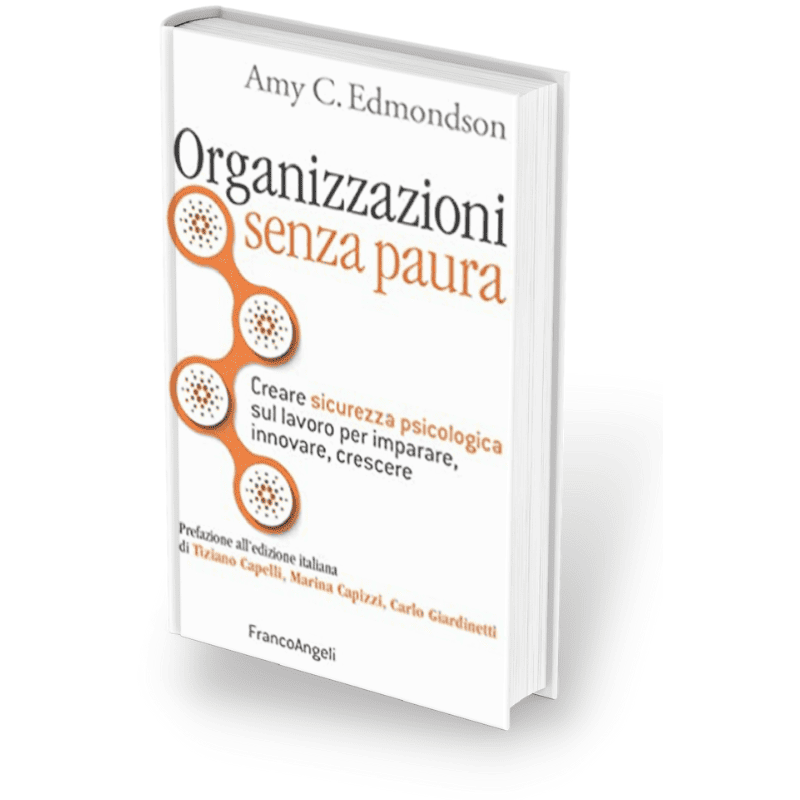
The Fearless Organization
Creating Psychological Safety in the Workplace for Learning, Innovation, and Growth by A. C. Edmondson (Italian Edition).
Preface to the Italian edition by M. Capizzi and T. Capelli, PRIMATE Co-founders, and C. Giardinetti, MBA.
The Italian edition of Amy C. Edmondson’s book (Harvard Business School) is edited by FrancoAngeli.
A step forward in the evolution of companies.
We will finally be able to face fear, one of the taboo themes of organizations, with managerial logic. Fear proliferates where there is a low grade of psychological safety, with significant damage to the health of both people and business. Increasing psychological safety frees up huge resources that greatly improve performance.